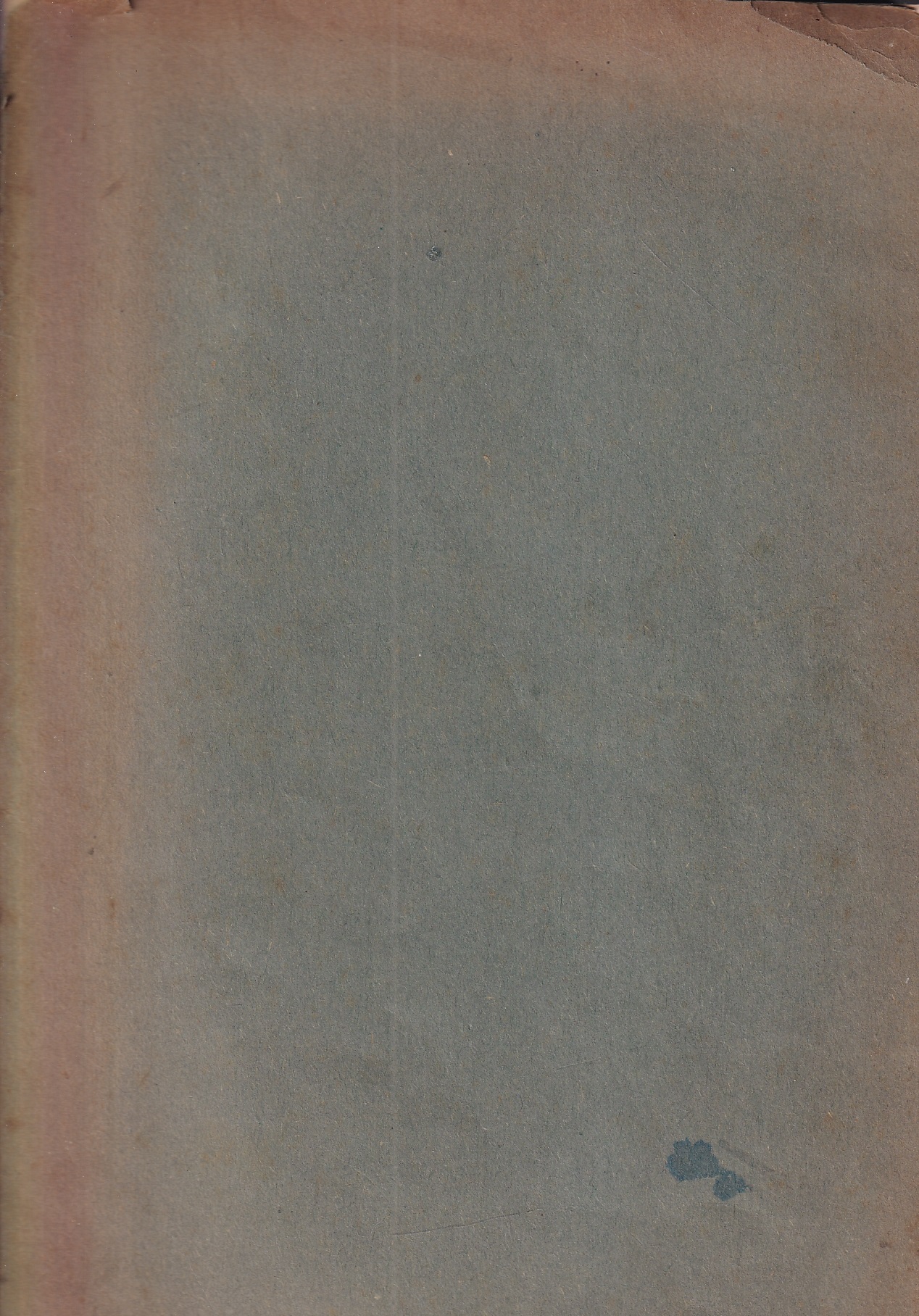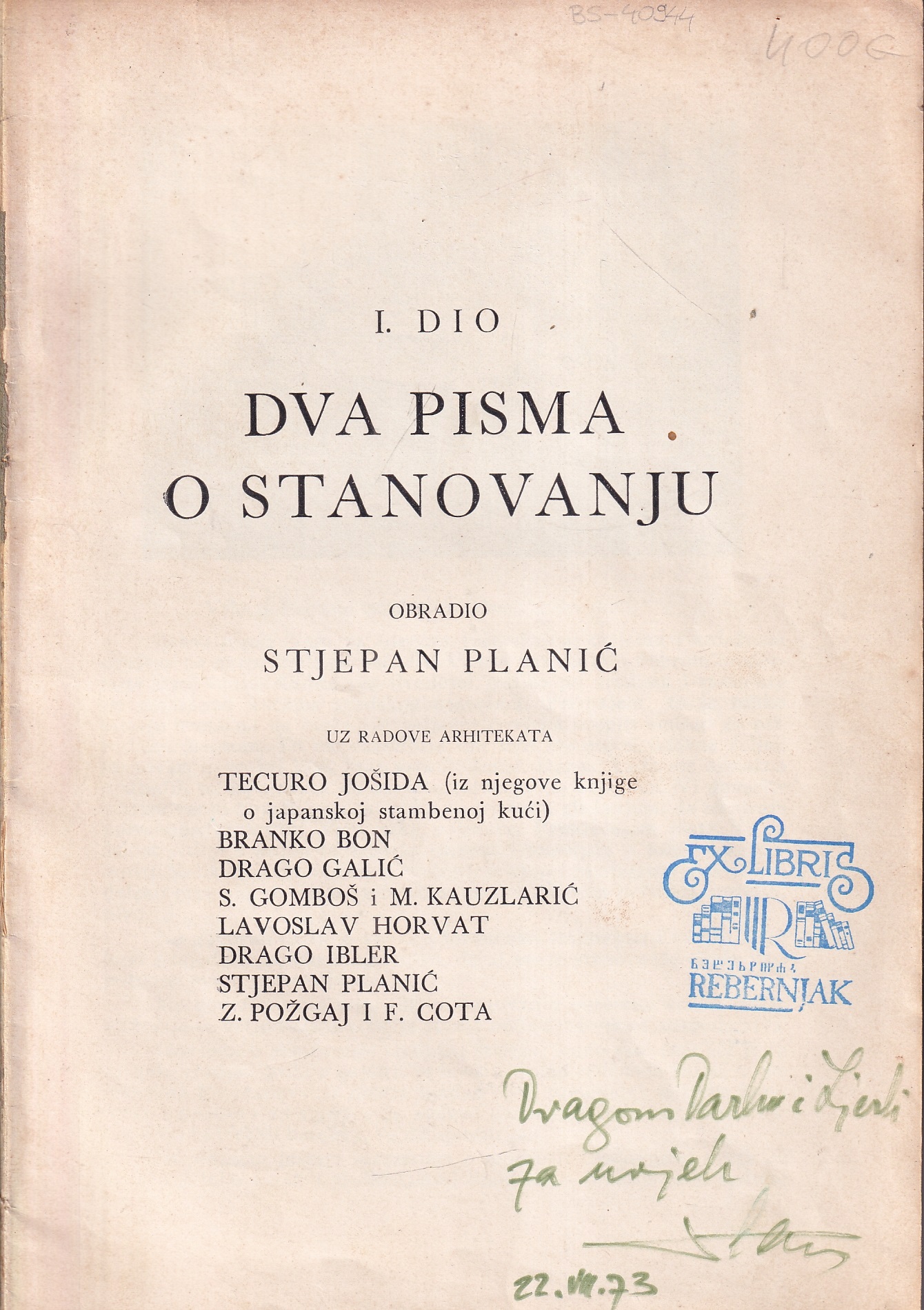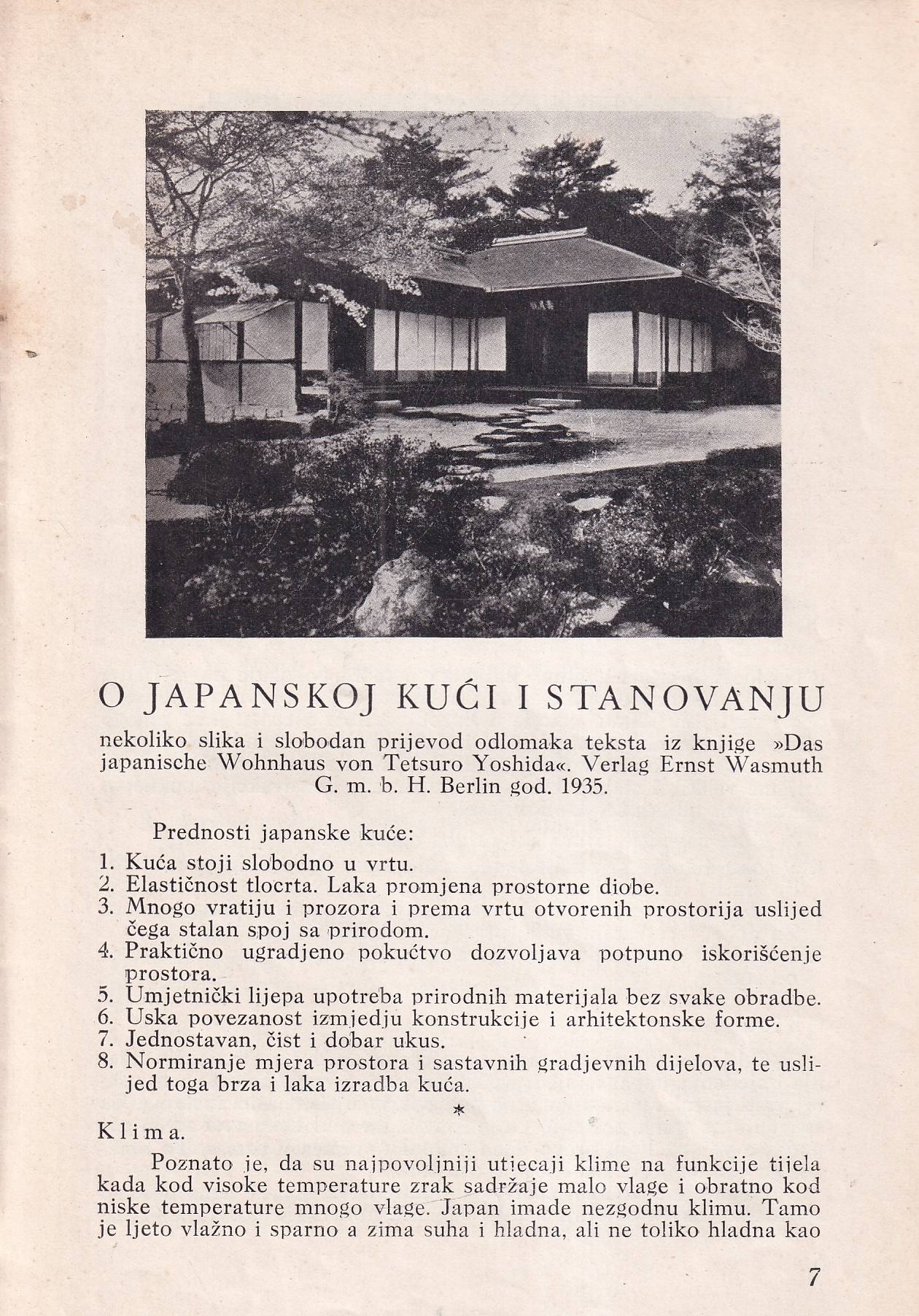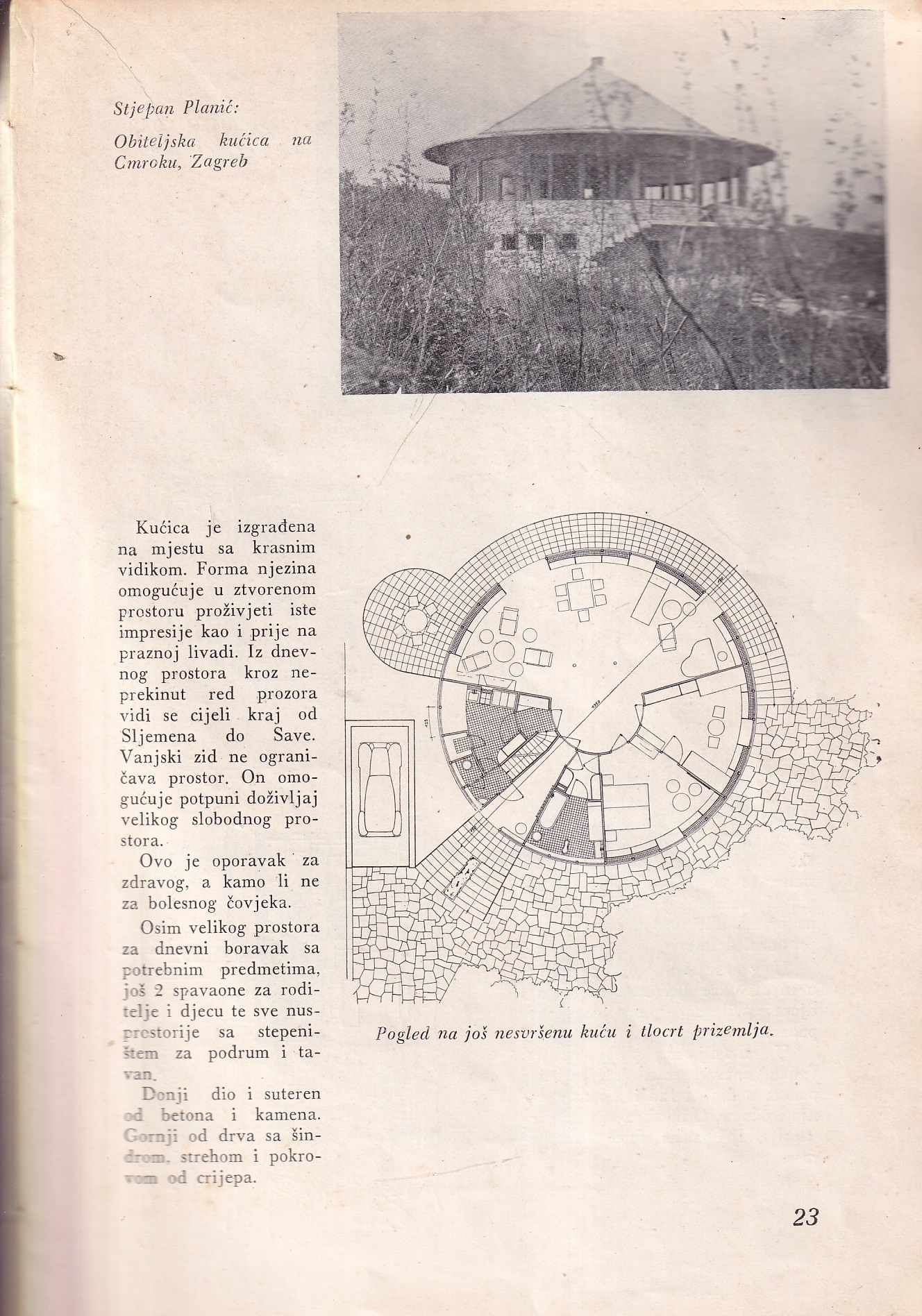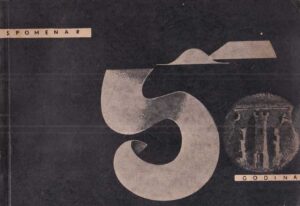Opis
Stjepan Planić (Zagreb, 27th of December, 1900 – 26th of December, 1980) was one of the most important Croatian architects of the 20th century and his work is highly valued as a singular contribution to the panorama of the modern Croatian architecture of the period between 1930 and 1980. Most of his realisations are in Zagreb and in its immediate neighbourhood, though a number of them are strewn across Croatia, from Èakovec, over the Kalnik to Požega, Jadranovo, Novi Vinodolski and the island of Vis.
In the Zagreb School of modern architecture several priorities belong to Stjepan Planić. Among the most important ones belongs a fact that he was the first to edit and publish a book, a list of problems in contemporary architecture, titled “One Ought to Know the Construction Progress”, in 1932. The book works primarily by way of pictures, that is by way of architectonic blueprints and photographs of the Planiæ’s generation of architects, accompanied by lapidary texts in form of a comment. We shall only be able to judge the actual significance of that well-produced, representative book, by looking into the emergence of the modern architecture in our parts and by placing the time of its publishing in the historical context of the then European architecture. It followed 9 years after Le Corbusier published his epoch-making book “Vers une architecture” and four years after Mies van der Rohe invited contemporary architects to realise one housing building each in Weissenhof near Stuttgart, completely free as regards their own commitments. It appeared only three years after founding of the International Congress of Modern Architecture CIAM by the world association of architects in La Sarraz. Planiæ took their manifesto as the motto of his book. Even nowadays, with its 130 pages and almost as many blueprints and photographs it demonstrates that the modern architecture of the twenties and the thirties was leading the technology development, as it did so many times in history, as was the case with some art disciplines of the 20th century. Beside objective documentation and completeness of review there are some tenets and content aspects in “The Problems” that are significant, even nowadays. To begin with, it is the relation between designing and legislature, the relation of the architect and urban-construction administration, the relation of a creator and the society, of an architect and an investor and promotion of the idea of an ideal “universitas architectorum et fabrorum”.

